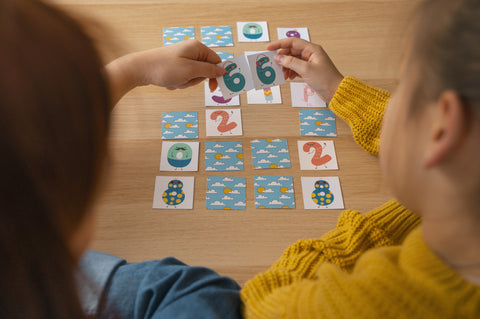Introduction
In today's fast-paced world, where the emphasis on academics and structured learning is ever-growing, it's easy to overlook the importance of play in a child's development. However, research has shown that play is not just about having fun; it is a vital component of a child's learning journey. Two approaches that prioritize learning through play are the Montessori Method and the use of traditional toys. In this article, we will explore the benefits of both approaches and delve into why they are essential for a child's growth and development.
The Montessori Method: A Hands-On Approach to Learning
The Montessori Method, developed by Dr. Maria Montessori in the early 1900s, focuses on providing children with an environment that promotes self-directed learning and exploration. Central to this approach is the belief that children learn best through hands-on experiences and by engaging with their environment.
One of the key features of the Montessori Method is the use of specially designed learning materials. These materials are carefully crafted to encourage children to use their senses and develop their cognitive, motor, and social skills. From the iconic pink tower to the movable alphabet, each material serves a specific purpose and promotes independent learning.
The Montessori classroom is meticulously arranged, allowing children to move freely and select activities that pique their interest. This freedom of choice and movement fosters a sense of independence, responsibility, and self-discipline. Children learn at their own pace, honing their concentration and problem-solving skills as they navigate through various activities.
 |

|
Traditional Toys: Expanding Imagination and Creativity
While the Montessori Method focuses on structured materials, traditional toys offer a different avenue for learning through play. Traditional toys, such as wooden blocks, puzzles, dolls, and board games, have been part of children's playtime for generations. These timeless toys provide a wealth of benefits for children's development.
First and foremost, traditional toys encourage imaginative play. Unlike electronic toys that often dictate how to play, traditional toys allow children to create their narratives and storylines. This freedom fosters creativity, as children have the opportunity to think critically, problem-solve, and explore their imagination.
Additionally, traditional toys promote social interaction. Board games, for instance, encourage turn-taking, collaboration, and the development of essential social skills. When playing with others, children learn patience, empathy, and how to navigate through conflicts in a fun and interactive manner.

The Benefits of Learning through Play
Both the Montessori Method and traditional toys have numerous benefits when it comes to learning through play. Let's explore some of the key advantages:
Cognitive Development 🧠
Play allows children to develop critical thinking skills, problem-solving abilities, and enhances their memory and attention span.
Motor Skills 💪
Through play, children refine their fine and gross motor skills, coordination, and dexterity.
Social and Emotional Development 🤝💕
Play provides opportunities for children to express their emotions, develop empathy, practice social interactions, and develop self-confidence.
Language and Communication Skills 🗣️🧒
Whether through storytelling, role-playing, or engaging in pretend play, play helps children develop their vocabulary, language skills, and effective communication.
Creativity and Imagination 🎨🧩
Play fosters creativity, imagination, and the ability to think outside the box. This is crucial for problem-solving and innovation later in life.
Conclusion
Learning through play is an integral part of a child's growth and development. The Montessori Method and traditional toys offer unique approaches to facilitate this kind of learning. The Montessori Method emphasizes hands-on experiences and self-directed learning, while traditional toys allow children to explore their imagination, creativity, and social skills.
Both approaches provide numerous benefits to children, promoting their cognitive, motor, social, and emotional development. By incorporating elements of the Montessori Method and traditional toys into a child's learning journey, we can create an environment where learning is not only effective but also enjoyable. Let us remember the importance of play as we support children in their quest for knowledge and growth.




Leave a comment